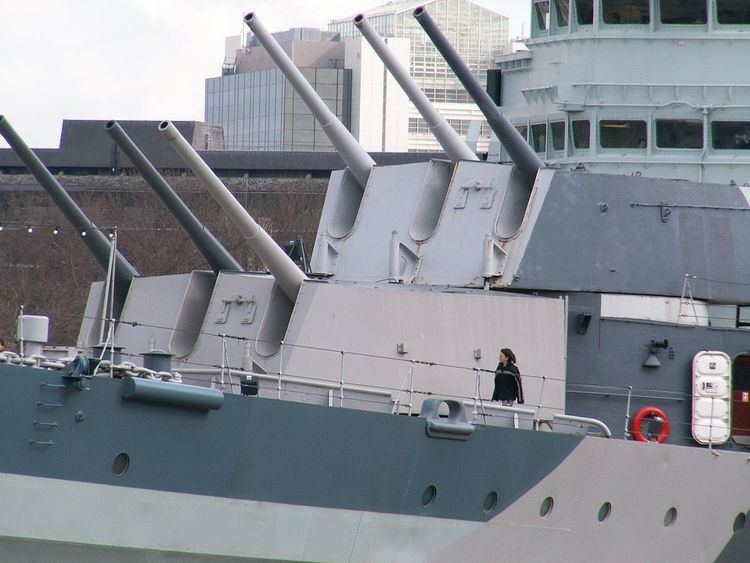Type Naval gun In service 1931 - 1985 | Place of origin United Kingdom Number built 469 | |
 | ||
Used by Royal Navy
Royal Australian Navy
Royal New Zealand Navy
Royal Canadian Navy
Indian Navy
Peruvian Navy
Republic of China Navy
People's Liberation Army Navy Wars Second World War
Korean War | ||
The 50 calibre BL 6 inch gun Mark XXIII was the main battery gun used on the Royal Navy and British Commonwealth's conventional (non-anti-aircraft) light cruisers built from 1930 through the Second World War, and passed into service with several other navies when ships were disposed of after the end of the War.
Contents
Description
It replaced the BL 8 inch Mk VIII naval gun used on earlier Washington Naval Treaty cruisers. These built-up guns consisted of a tube and 4.5 metre jacket with a hand-operated Welin breech block. Cloth bags contained 14 kg (30 pound) charges of cordite or flashless (NQFP) powder for a 51-kg (112-pound) projectile. Useful life expectancy was 1100 effective full charges (EFC) with standard cordite and 2200 EFC with NQFP per barrel. The typical maximum rate of fire was eight rounds per gun, per minute.There were three mountings the two-gun Mk XXI, the three-gun Mk XXII and the three-gun Mk XXIII. Depending on the mount elevation limits differed. The Mk XXI turret elevation limits were +60 degrees to -5 degrees and the Mk XXII turret elevation limits were +45 degrees to -5 degrees. Loading could be accomplished at any angle up to +12.5 degrees, although the preferred loading angle was between +7 and +5 degrees for all three mounts. The Mk XXI and XXII mounts used a "short trunk" ammunition hoist while the Mk XXIII used a "long trunk" ammunition hoist system, which reduced the crew requirements and increased the speed of the ammunition hoists. A RN gunnery officer on HMS Bermuda gave details of the loading cycle which could be attained in the Mk XXIII turret with a well trained crew: "...a loading cycle of four and a half to 5 seconds was attained at low elevation, another two to three seconds being required with the guns elevated for long range. The time would lengthen as fatigue set in, but was creditable..."
